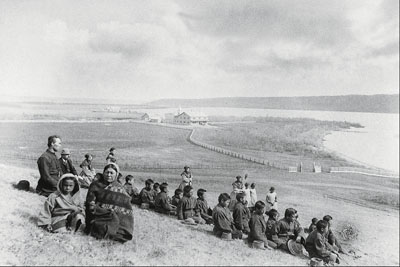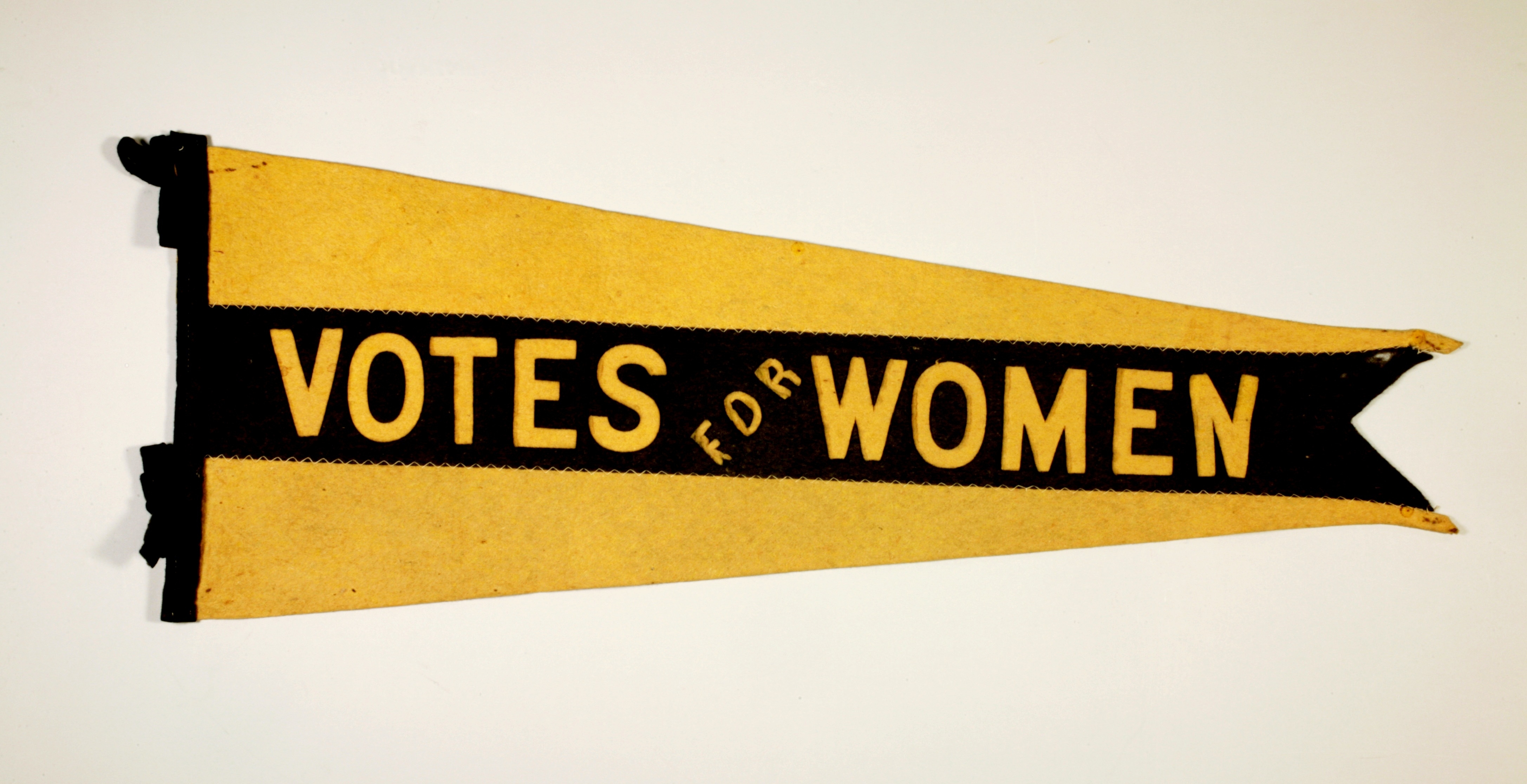Browse "Social History"
-
Article
Prisoner of War Camps in Canada
Canada operated prison camps for interned civilians during the First and Second World Wars, and for 34,000 combatant German prisoners of war (POWs) during the Second World War.
"https://d2ttikhf7xbzbs.cloudfront.net/media/media/cde937a6-33ac-4af0-87d7-4a9323820e13.jpg" // resources/views/front/categories/view.blade.php
https://d2ttikhf7xbzbs.cloudfront.net/media/media/cde937a6-33ac-4af0-87d7-4a9323820e13.jpg
-
Article
Prohibition in Canada
Prohibition in Canada came about as a result of the temperance movement. It called for moderation or total abstinence from alcohol, based on the belief that drinking was responsible for many of society’s ills. The Canada Temperance Act (Scott Act) of 1878 gave local governments the “local option” to ban the sale of alcohol. Prohibition was first enacted on a provincial basis in Prince Edward Island in 1901. It became law in the remaining provinces, as well as in Yukon and Newfoundland, during the First World War. Liquor could be legally produced in Canada (but not sold there) and legally exported out of Canadian ports. Most provincial laws were repealed in the 1920s. PEI was the last to give up the “the noble experiment” in 1948.
"https://d2ttikhf7xbzbs.cloudfront.net/media/media/c0f20001-e566-4ebf-9c88-f1a5ae278291.jpg" // resources/views/front/categories/view.blade.php
https://d2ttikhf7xbzbs.cloudfront.net/media/media/c0f20001-e566-4ebf-9c88-f1a5ae278291.jpg
-
Article
Racial Segregation of Black People in Canada
Racial segregation is the separation of people, or groups of people, based on race in everyday life. Throughout Canada’s history, there have been many examples of Black people being segregated, excluded from, or denied equal access to opportunities and services such as education, employment, housing, transportation, immigration, health care and commercial establishments. The racial segregation of Black people in Canada was historically enforced through laws, court decisions and social norms. (See also Anti-Black Racism in Canada.) (This is the full-length entry on racial segregation of Black people in Canada. For a plain-language summary, please see Racial Segregation of Black People in Canada (Plain-Language Summary).)
"https://d2ttikhf7xbzbs.cloudfront.net/media/new_article_images/RacialSegregationBlackPeopleCanada/Ar00710.png" // resources/views/front/categories/view.blade.php
https://d2ttikhf7xbzbs.cloudfront.net/media/new_article_images/RacialSegregationBlackPeopleCanada/Ar00710.png
-
Article
Refus global
Refus global was a manifesto published in 1948 and signed by 16 figures from Quebec’s artistic community. It challenged the traditional values of Quebec. The manifesto also fostered an opening-up of Quebec society to international thought. (See also Quiet Revolution.)
"https://d2ttikhf7xbzbs.cloudfront.net/media/media/fe698d06-4a75-46e2-aa34-435400e0724e.jpg" // resources/views/front/categories/view.blade.php
https://d2ttikhf7xbzbs.cloudfront.net/media/media/fe698d06-4a75-46e2-aa34-435400e0724e.jpg
-
Article
Refus Global Manifesto
Refus Global Manifesto We are the offspring of modest French-Canadian families, working class or lower middle class, who, ever since their arrival from the Old Country, have always remained French and Catholic through resistance to the conqueror, through strong attachment to the past, by choice and sentimental pride and out of sheer necessity. We are the settlers who, in 1760, were first thrust into the fortress of fear, the usual refuge of the vanquished, and...
"https://d2ttikhf7xbzbs.cloudfront.net/media/media/1eeca976-046e-482e-ad6e-6c08419b4a46.jpg" // resources/views/front/categories/view.blade.php
https://d2ttikhf7xbzbs.cloudfront.net/media/media/1eeca976-046e-482e-ad6e-6c08419b4a46.jpg
-
Article
Remembering the walrus hunt
The Aivilingmiut of Nunavut are walrus hunters. Like many regional groups of Inuit, they’re named after the animal that once kept them alive.
"https://d2ttikhf7xbzbs.cloudfront.net/media/media/b0be7080-64dd-42a1-b455-dcf920df8bfa.jpg" // resources/views/front/categories/view.blade.php
https://d2ttikhf7xbzbs.cloudfront.net/media/media/b0be7080-64dd-42a1-b455-dcf920df8bfa.jpg
-
Article
Representing the Home Front: The Women of the Canadian War Memorials Fund
While they may not have had access to the battlefields, a number of Canadian women artists made their mark on the visual culture of the First World War by representing the home front. First among these were the women affiliated with the Canadian War Memorials Fund, Canada’s first official war art program. Founded in 1916, the stated goal of the Fund was to provide “suitable Memorials in the form of Tablets, Oil-Paintings, etc. […], to the Canadian Heroes and Heroines in the War.” Expatriates Florence Carlyle and Caroline Armington participated in the program while overseas. Artists Henrietta Mabel May, Dorothy Stevens, Frances Loringand Florence Wyle were commissioned by the Fund to visually document the war effort in Canada.
"https://d2ttikhf7xbzbs.cloudfront.net/media/media/c5bd4814-1974-4a38-b0bf-006c4ec26687.jpg" // resources/views/front/categories/view.blade.php
https://d2ttikhf7xbzbs.cloudfront.net/media/media/c5bd4814-1974-4a38-b0bf-006c4ec26687.jpg
-
Article
Residential Schools in Canada (Plain-Language Summary)
In the early 1600s, Catholic nuns and priests established the first residential schools in Canada. In 1883, these schools began to receive funding from the federal government. That year, the Government of Canada officially authorized the creation of the residential school system. The main goal of the system was to assimilate Indigenous children into white, Christian society. (See also Inuit Experiences at Residential School and Métis Experiences at Residential School .) (This article is a plain-language summary of residential schools in Canada. If you are interested in reading about this topic in more depth, please see our full-length entry Residential Schools in Canada.)
"https://d2ttikhf7xbzbs.cloudfront.net/media/media/8d3d94d2-cb82-47ad-97a5-a70b351c44e4.jpg" // resources/views/front/categories/view.blade.php
https://d2ttikhf7xbzbs.cloudfront.net/media/media/8d3d94d2-cb82-47ad-97a5-a70b351c44e4.jpg
-
Article
Revolutionary Industrial Unionism
Revolutionary industrial unionism, or syndicalism, a broad international movement dedicated to organizing all workers into single, unified labour organizations designed to overthrow the capitalist system by means of industrial actions, including the general strike.
"https://development.thecanadianencyclopedia.ca/images/tce_placeholder.jpg?v=e9dca980c9bdb3aa11e832e7ea94f5d9" // resources/views/front/categories/view.blade.php
https://development.thecanadianencyclopedia.ca/images/tce_placeholder.jpg?v=e9dca980c9bdb3aa11e832e7ea94f5d9
-
Article
Separate School
In both the US and Canada parents are free to choose to send their children to the state-run public SCHOOL SYSTEM or to a variety of private fee-paying schools.
"https://development.thecanadianencyclopedia.ca/images/tce_placeholder.jpg?v=e9dca980c9bdb3aa11e832e7ea94f5d9" // resources/views/front/categories/view.blade.php
https://development.thecanadianencyclopedia.ca/images/tce_placeholder.jpg?v=e9dca980c9bdb3aa11e832e7ea94f5d9
-
Article
Enslavement of Indigenous People in Canada
To a tremendous extent, the enslavement of Indigenous peoples defines slavery in Canada. Fully two-thirds of the slaves in the colony of New France were Indigenous. After 1750, the number of Indigenous slaves brought into French Canada began to decline. When slavery was abolished in British colonies in 1834, Black slaves far outnumbered Indigenous slaves. (See also Black Enslavement in Canada.) The enslavement of Indigenous peoples is part of a dark legacy of colonization that has had implications on generations of Indigenous peoples in Canada and throughout North America.
"https://d2ttikhf7xbzbs.cloudfront.net/media/media/1ddef9e7-e3c5-4510-9e9c-e1994ac29434.jpg" // resources/views/front/categories/view.blade.php
https://d2ttikhf7xbzbs.cloudfront.net/media/media/1ddef9e7-e3c5-4510-9e9c-e1994ac29434.jpg
-
Article
Social History
Social history is a way of looking at how a society organizes itself and how this changes over time. The elements that make up Canada’s social history include climate and geography, as well as the transition to industrialization and urbanization.
"https://d2ttikhf7xbzbs.cloudfront.net/media/media/deaaaf0f-2d04-4ae8-8391-d6255fe2a78a.jpg" // resources/views/front/categories/view.blade.php
https://d2ttikhf7xbzbs.cloudfront.net/media/media/deaaaf0f-2d04-4ae8-8391-d6255fe2a78a.jpg
-
Article
Status of Women
The first European expeditions that came to Canada to explore and trade for furs did not include women.
"https://d2ttikhf7xbzbs.cloudfront.net/media/media/be832524-f521-4200-b242-3c702ae0f3c4.jpg" // resources/views/front/categories/view.blade.php
https://d2ttikhf7xbzbs.cloudfront.net/media/media/be832524-f521-4200-b242-3c702ae0f3c4.jpg
-
Article
Women's Suffrage in Canada
Women’s suffrage (or franchise) is the right of women to vote in political elections; campaigns for this right generally included demand for the right to run for public office. The women’s suffrage movement was a decades-long struggle to address fundamental issues of equity and justice. Women in Canada, particularly Asian and Indigenous women, met strong resistance as they struggled for basic human rights, including suffrage. Representative of more than justice in politics, suffrage represented hopes for improvements in education, healthcare and employment as well as an end to violence against women. For non-white women, gaining the vote also meant fighting against racial injustices. (See also Women’s Suffrage Timeline.)
"https://d2ttikhf7xbzbs.cloudfront.net/media/media/88bab6f6-366c-45d5-be02-092e23d46e97.jpg" // resources/views/front/categories/view.blade.php
https://d2ttikhf7xbzbs.cloudfront.net/media/media/88bab6f6-366c-45d5-be02-092e23d46e97.jpg
-
Editorial
Acadian Expulsion (the Great Upheaval)
Soldiers rounding up terrified civilians, expelling them from their land, burning their homes and crops ‒ it sounds like a 20th century nightmare in one of the world's trouble spots, but it describes a scene from Canada's early history, the Deportation of the Acadians.
"https://d2ttikhf7xbzbs.cloudfront.net/Acadian still.png" // resources/views/front/categories/view.blade.php
https://d2ttikhf7xbzbs.cloudfront.net/Acadian still.png
